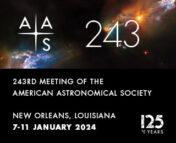Welcome to the Astrobites coverage of the 2024 April APS Meeting! We will report on highlights from each day here, from APS Plenaries to DAP (Division of Astrophysics) invited sessions to graduate student research talks. If you’d like to see more timely updates during the day, we encourage you to search the #aprilAPS hashtag on twitter. We’ll be posting once a day during the week, so be sure the visit the site often to catch all the news!
Hans A. Bethe Prize Session on Cosmology (by Jessie Thwaites)
The Hans A. Bethe Prize is awarded to recognize outstanding work in theory, experiment, or observation in astrophysics, nuclear physics, nuclear astrophysics, or closely related fields. It is awarded annually by the APS Division of Astrophysics (DAP) and Division of Nuclear Physics (DNP), and consists of a $10,000 prize and a certificate citing the recipient’s work. The 2024 recipient of this prize is Dr. Richard (Dick) Bond, who gave the first talk of the session.
Dr. Bond’s talk, “Entropy in a Coherent Universe, Quantum Information in the Action of the Cosmic SuperWeb,” discussed how we can use the concept of entropy to understand the history of the universe. All of the current structure of the universe we now see can be understood through entropy. Essentially, tiny patterns of quantum noise that were present in the early universe (at the times of the cosmic microwave background (CMB) and cosmic neutrino background (CnuB)) changed the way our universe formed on a large scale, all the way to the clustering of matter (both normal matter and dark matter) into halos, stars, galaxies, black holes, and others.
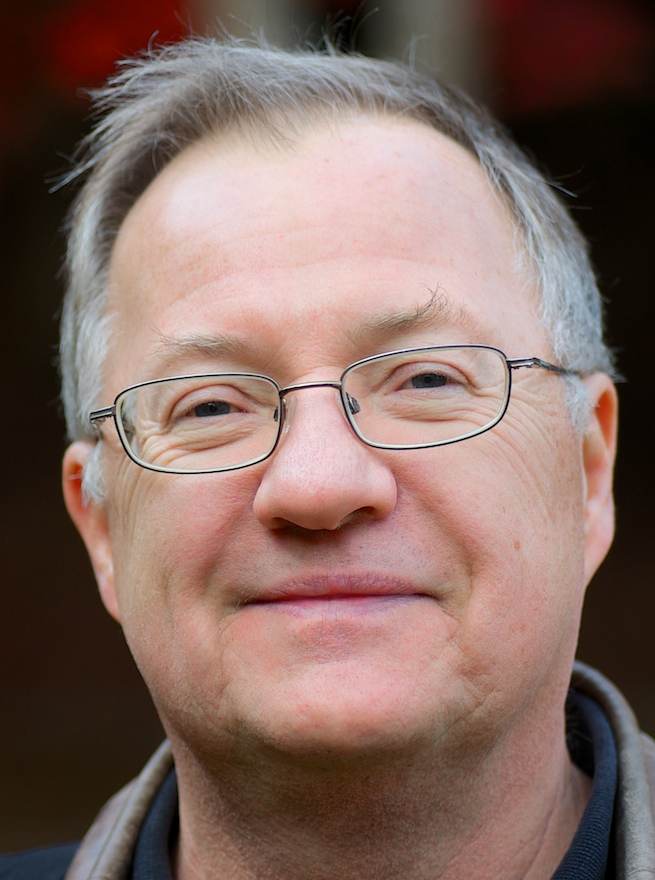
In the formation of our universe, entropy and gravity went hand in hand to give the structure we see today. By understanding the magnitude of that entropy in different environments, we can try to understand better how those structures formed. Those derivations require a wide range of observations from a whole range of telescopes to inform what we know about the early universe.
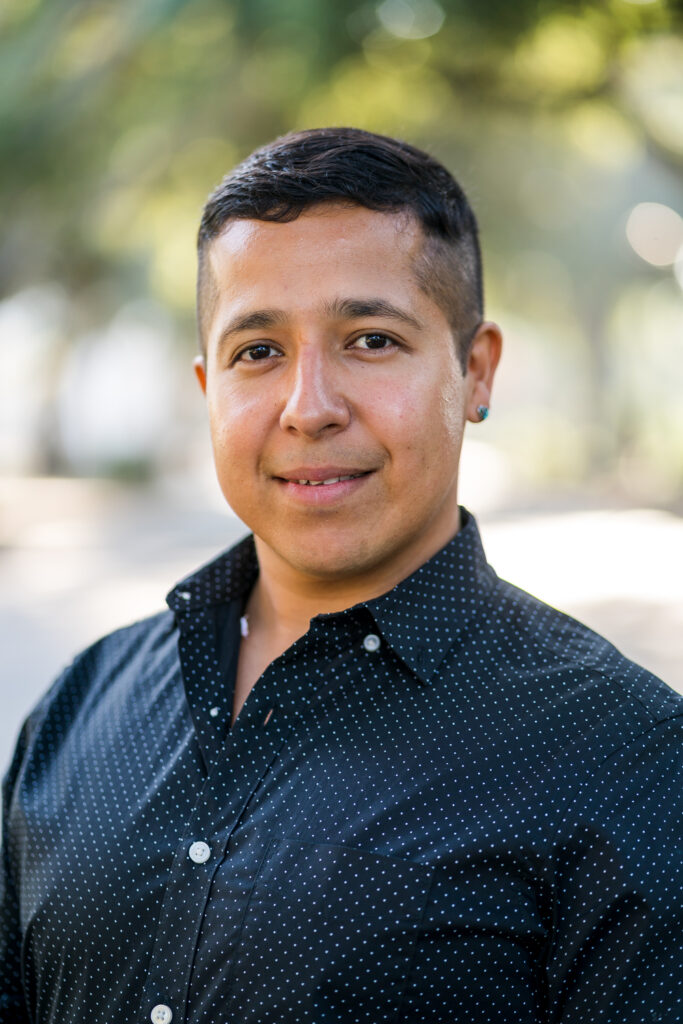
Following Dr. Bond’s talk, Dr. Jorge Moreno discussed how we can use simulations to understand the formation of structure in our universe. His talk, “From excursion sets to today: a random walk through the history of cosmological simulations,” discussed using a method called a random walk to understand how dark matter halos form. He used this method in simulations to understand the ancestry (formation and evolution) of these complex large scale structures.
He also used simulations to understand two galaxies that were recently observed to be absent of dark matter (this is very atypical – most galaxies have some amount of dark matter in them!). By using his simulation package, he was able to produce 7 galaxies that were also missing dark matter halos, and to probe the processes that could have stripped away the dark matter in these galaxies. In the future (post-JWST) era, he discussed the need for extremely large telescopes in each hemisphere, to probe further distances and fainter galaxies.
The final talk of the session was given by Dr. Tommaso Treu, who discussed observations from JWST of the early universe in his talk, “JWST’s First Glimpses of Early Galaxies and Implications for Cosmology.” In his talk, JWST is a time machine, capable of looking back to only a few hundred million years after the Big Bang (that might seem like a long time, but if we think of the time from the Big Bang to now as 10 minutes, then JWST can look all the way back to within the first about 8.5 seconds of the universe!).
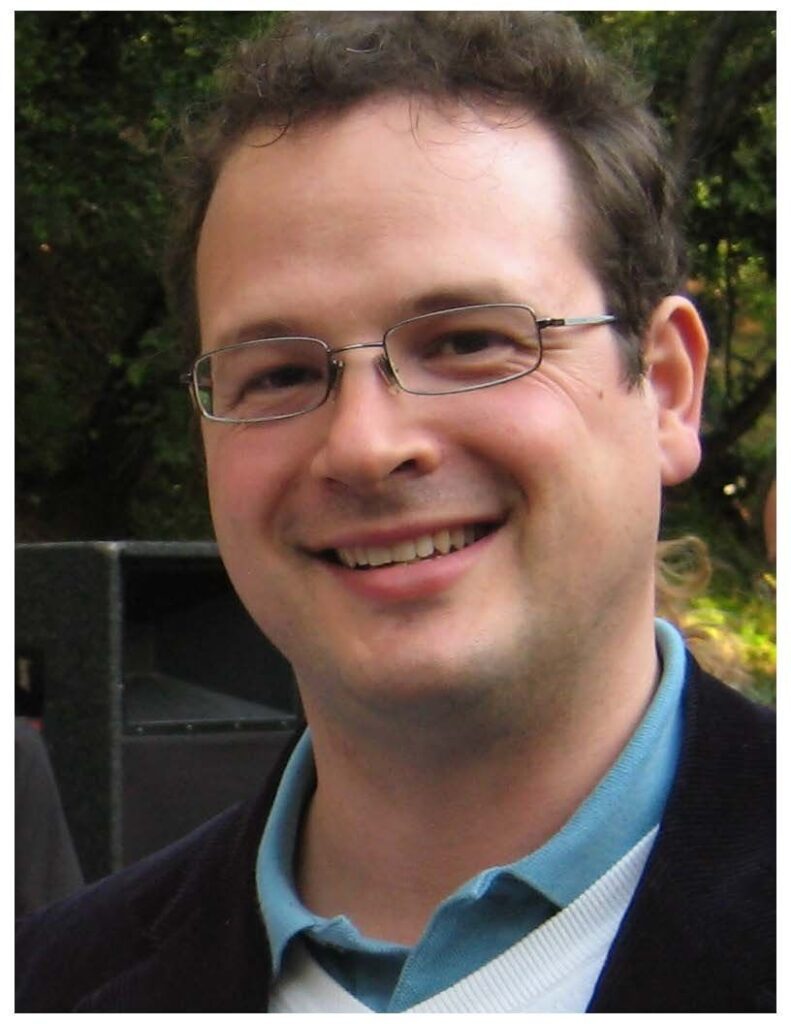
Looking out this far, JWST is able to start probing the formation of stellar objects near when the first stars and black holes were forming. He discussed some of the first high-redshift galaxy candidates seen with JWST (at redshift >10). These galaxies look very different from what we’re used to – they have very low oxygen abundance, which means their spectra are quite different from stars we often see at lower redshifts.
Supernovae (by Storm Colloms)
Supernovae occur at the end of a massive star’s life and at the triggering of white dwarfs and are a crucial part of the lives of stars. Despite this, there are many uncertainties in supernovae, from the macrophysics of stellar evolution to the microphysics of the particle interactions inside the central engine. This session’s series of talks featured Dr. Adam Burrows discussing developments in supernovae theory and modeling, Dr. Tea Temim discussing new supernova remnant observations with JWST, and Yanyan Zheng discussing observing supernovae with gravitational waves.
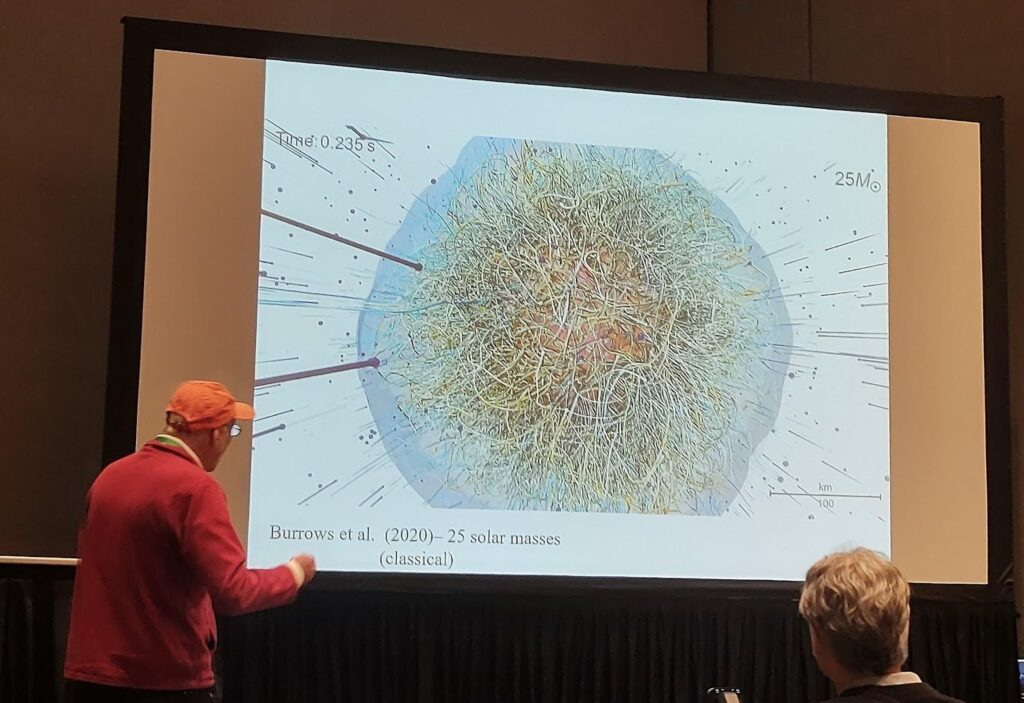
Dr. Burrows kicked us off by highlighting how asymmetric supernova explosions can be. While 1D and 2D simulations of supernovae have been used previously to reduce computational expense, he says we now can run several 3D simulations per year, which is crucial to be able to capture this asymmetry. Correlations between explodability, supernovae energy, production of heavy elements and neutrinos, and induced kicks all play a part in the complex simulations, causing waves of material falling back and being exploded out. There are still many things to consider, but for now these 3D simulations are advancing the field, and make for some very pretty graphics at the same time.
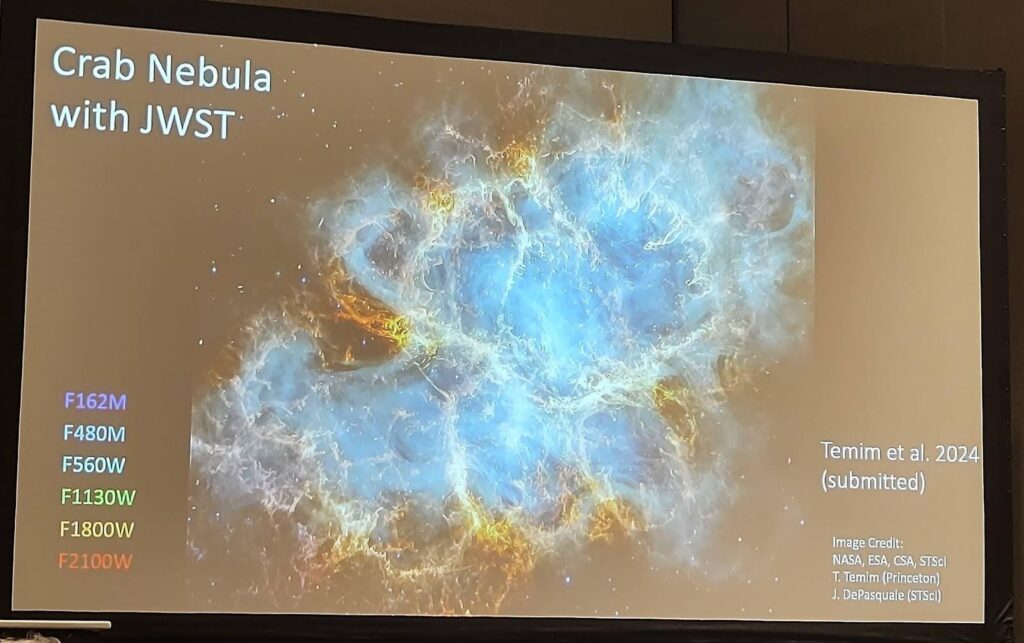
Next, Dr. Temim told the audience how observing supernovae remnants are extremely useful in telling the story behind supernovae progenitors. While the progenitors may not be spatially resolvable, the dust and aftershock clouds in their remnants definitely are – especially with brand new observations with JWST! There are over 350 of these remnants in our galaxy and hundreds more in nearby galaxies. Using the Chandra X-ray telescope to see the ejecta from the shock wave and the JWST to see into the interior of the remnant of the supernova in the infrared, we can better understand the dynamics of the shock and the elemental abundances in the remnant. This multi-wavelength analysis is key for putting constraints on the best model to the observations, and understanding the progenitors of these objects.

Lastly, Yanyan Zheng, a PhD candidate at Missouri University of Science & Technology, told us about observing gravitational waves (GWs) directly from supernovae shocks. GWs can carry just one 100,000th to one 1,000,000,000th of the energy of a supernovae away, and would appear as high frequency signals in the ground based detectors. We can only observe supernovae with GWs relatively close by – within the Milky Way would be ideal. Unfortunately the last supernovae in the Milky Way was ~300 years ago, and the last supernova in the local vicinity was SN1987A, 37 years ago. However, searches can be done either with models of the expected supernovae GW waveforms, or with matching correlated bursts of energy in the detectors. For the future sensitivity updates to our GW detectors, we expect the to be able to detect supernovae all across the galaxy, and meanwhile searches are undergoing for seeing the supernova SN2023ixf from last May in the GW detector data while the GW observatories were preparing for the start of the current observing run.
Thorne-Żytkow Objects in the Era of Celestial Cinematography (by Storm Colloms)
This session of invited speakers introduced investigations into a type of theoretical stars, claimed by the first speaker of the session, Dr Emily Levesque, associate professor at the University of Washington, to be ‘the weirdest stars in the universe‘: Thorne-Żytkow Objects (TZOs). Dr Levesque introduced these objects as neutron stars which have been engulfed by an envelope of gas from an expanded companion star after it explodes in a supernova. The neutron star adopts this envelope, which gets stirred by convective heating, allowing for generation of exotic elements such as molybdenum and rubidium. But hunting for signs of these elements in stellar absorption lines proves a problem: spectra of candidates are noisy and vary with the stellar temperature, and even with very fine measurements we still don’t know exactly how much molybdenum and rubidium to expect. Another possible avenue for detection is from continuous gravitational waves (GWs), which would be a smoking gun detection when we have sensitive enough GW detectors.

Despite searches for these objects, there has not yet been a confirmed observation. However, Dr. Levesque introduced one highly suspicious TZO candidate: HV2112, of which a discovery paper was published in 2014. This object was thoroughly investigated by the next speaker, Dr. Anna O’Grady, McWilliams Fellow at Carnegie Mellon University, who looked at HV2112 and several other candidate TZOs in the small and large magellanic clouds during her PhD. TZOs could be easily confused with asymptotic giant branch stars (AGBs) as they are both luminous and low in temperature. Dr. O’Grady led the audience on a hunt for clues to the true identity of these candidates. HV2112 has properties which live up to the claim of being one of these weird stars: 4 magnitudes of variability at optical wavelengths – four times more than would be expected of a typical ABG star, and extremely large abundance of molybdenum and rubidium. By looking at the candidates masses, spectroscopy, evidence for the star formation history of the objects, and their position on a HR diagram, Dr. O’Grady found that all the candidates seemed most likely to be AGBs… except HV2112, which remained an outlier!
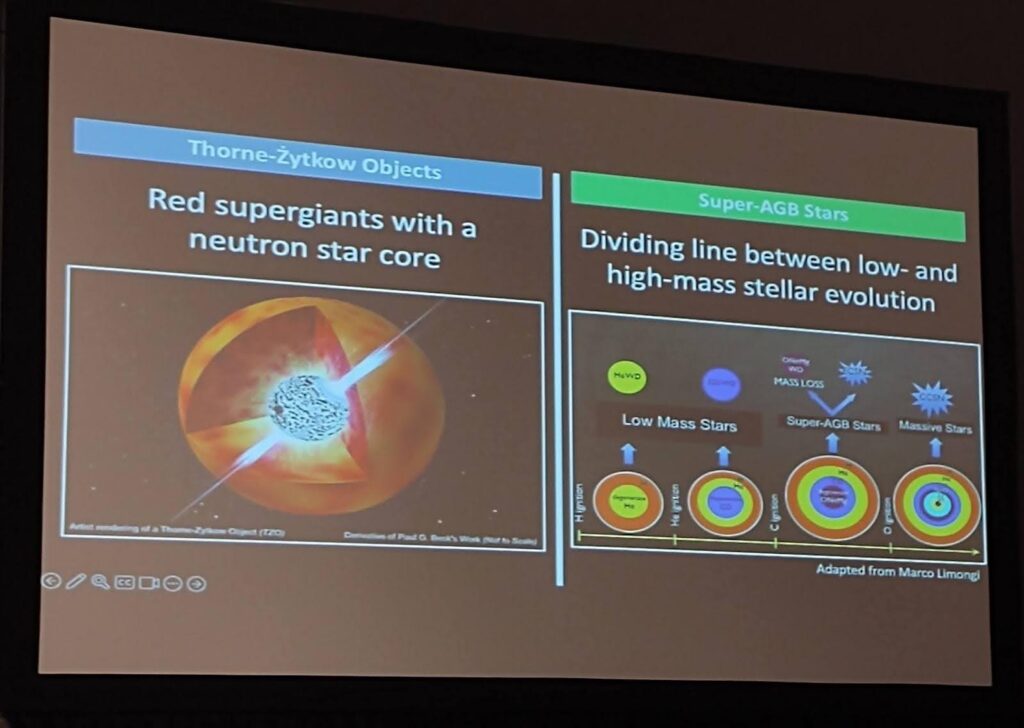
So could it be true that we’ve found the weirdest star in the universe? The last speaker, Rosa Everson, PhD Candidate at the University of California, Santa Cruz, looked at how this TZO could have formed from binary stellar progenitors. One key for modeling the formation of a TZO is that the neutron star needs to be stable in the surrounding envelope, meaning the system has to be in hydrostatic equilibrium, balancing the forces between pressure and gravity. Everson explained that just because there is a merging neutron star and stellar envelope, does not always mean that there is the formation of a TZO – in fact, this formation is often disrupted by excess angular momentum forming an accretion disk and ejection of the envelope from the core. By simulating the evolution of potential TZO progenitors, Everson found that this disruption is almost always the case. Instead of producing TZOs, binary stellar formation progenitors with an engulfed neutron star are ‘high drama, high energy transient factories‘, hotspots for production of luminous red novae and gamma ray bursts. Hope is not lost however for the weirdest stars in the universe. There could still be support for generation of TZOs through dynamical collisions of stars in dense environments like stellar clusters, or in stellar systems with three stars, or TZOs supported by a black hole core instead of a neutron star.

Multimessenger Kilonova Astronomy (by Jessie Thwaites)
The final session of the day was all about kilonovae – one of the bright electromagnetic signals that can be emitted after a merger of binary neutron stars. There were three talks in this session, covering different aspects of the binary merger and its associated electromagnetic signatures.
The first talk, “Connecting Kilonovae and Merger Dynamics with Numerical Relativity,” was presented by Dr. David Radice. He explored the dynamics of neutron star mergers, and how the emission seen in the kilonova (or if a kilonova is seen) can help us understand the neutron star equation of state. In the case of the famous GW170817, a kilonova was observed, and this kilonova allows us to pin down properties of the system.
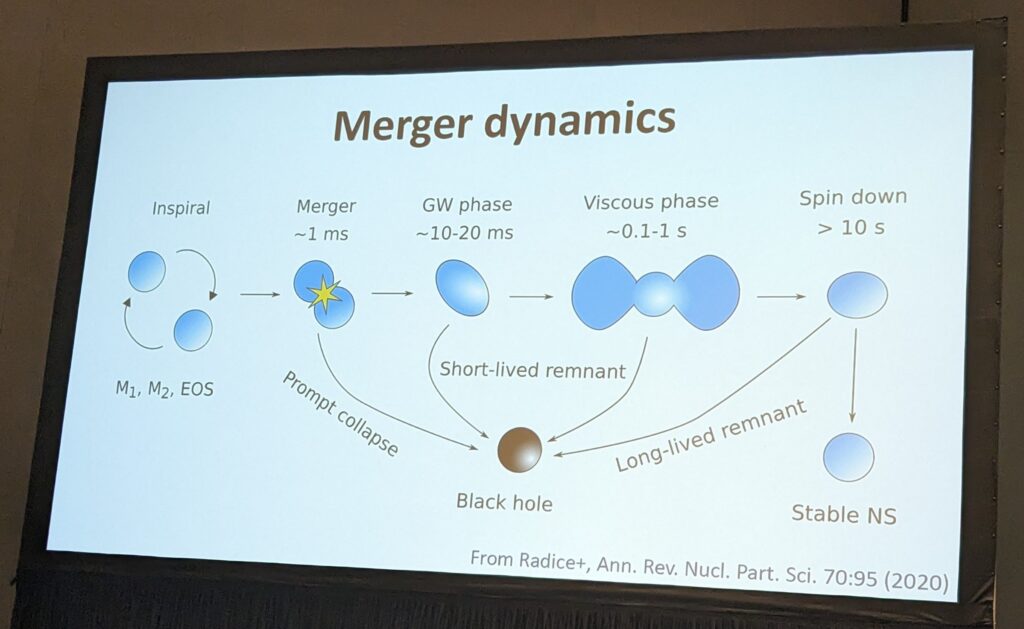
There are two components to the neutron star merger, which Dr. Radice discusses: the “blue” and “red” parts of the kilonova. The blue emission can be described by winds generated after the merger, which naturally occur after the objects merge. Another option is a magnetized wind, but this has the potential to be enhanced and overshoot the observations of the blue kilonova. The red kilonova is better understood, but harder to model.
The next speaker in the session, Dr. Leo Singer, switched gears to discuss the gravitational wave perspective of merging binaries, in a talk titled “Gravitational Wave Alerts: What We Know and When We Know It.” He discussed how the information we get from gravitational wave detections and electromagnetic observations can be complimentary, and help us pin down properties of the system studied. For example, with gravitational waves we can get a good measure of the distance (technically, the luminosity distance and inclination angle of the system together) to the binary merger, while electromagnetic observations give us information about the host galaxy and redshift.
He described the parameters sent by the LIGO-Virgo-KAGRA collaborations in real-time to promote multi-messenger follow-up. These include the type of binary merger (binary neutron star, neutron star–black hole binary, binary black hole, or terrestrial/noise) and properties of the system – assuming the merger is astrophysical, was one of the objects a neutron star? Was it in the range of 3 to 5 solar masses (too heavy for a neutron star, but lighter than known black holes)? We haven’t yet seen a binary neutron star merger in the current observing run, but there is a high theoretical probability of seeing one in the coming months, which would be exciting for follow-up.
The final speaker of the session, Dr. Wen-Fai Fong (who has also previously been interviewed for AAS by Astrobites) gave a talk titled “Coupling Gravitational Waves and Light: A Review of Electromagnetic Signals and Future Prospects.” She discussed the fortuitous GW170817, which was both nearby and had good localization, allowing the kilonova counterpart to be observed quickly. She talked about the challenges associated with searching for kilonovae, which requires coordination with groups across multiple messengers.
The second half of her talk discussed the gamma-ray bursts (GRBs) which also may have associated kilonovae, starting with GRB 130603B. Most short GRBs (<2 seconds) are thought to come from mergers of compact objects, while long (>2 seconds) GRBs come from the collapse of massive stars. But puzzlingly, two long GRBs, GRB 211211A and GRB 230307A, may have associated kilonovae, and in the case of GRB 230307A even a spectrum from JWST, which aligns well with the spectrum observed from GRB 170817A (associated with GW170817).
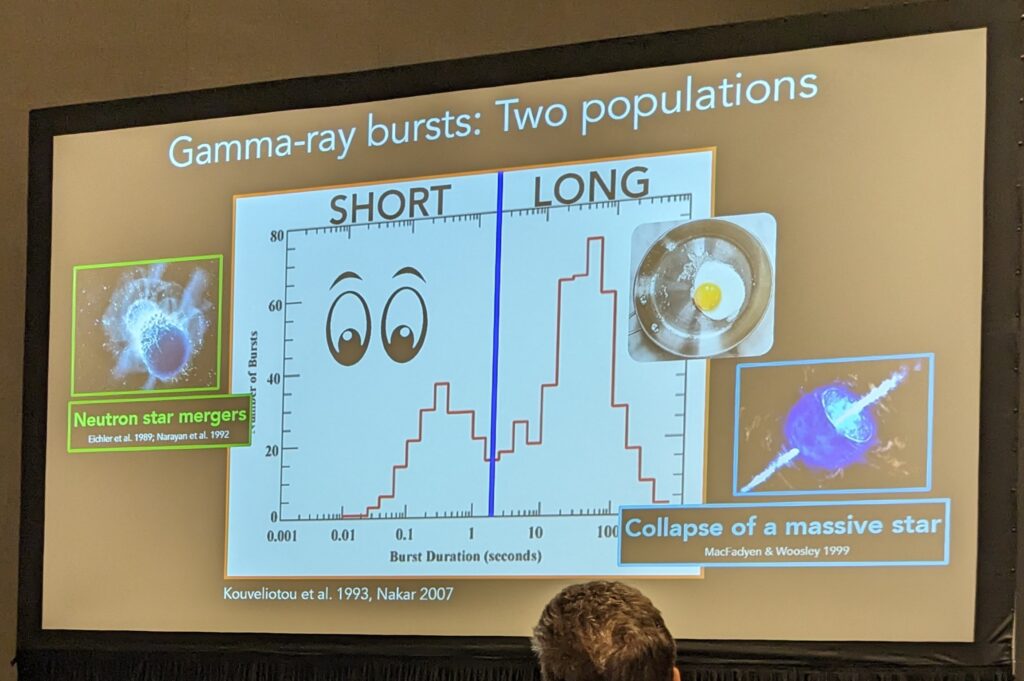
Highlighting the research of Astrobites authors
We also want to highlight the research our Astrobites authors are doing and presenting at APS April!
Population Inference of Gravitational Wave Sources (by Jessie Thwaites)
In one of the first talks of the day, Astrobites author Storm Colloms shared their research in a talk titled “Uncovering the Origins of Binary Black Holes with Normalizing Flows.” By better understanding the binary black hole systems observed by LIGO-Virgo-KAGRA, scientists hope to understand more about how these systems form and evolve over time.
Storm’s talk focused on using a machine learning method called “normalizing flows,” which take a probability density function through a series of invertible transformations, which allow them to produce a complex distribution, which in this case is the population of black hole binaries. They start by training the network on a simulated set of binaries, and then once the network is trained, they apply it to real gravitational wave data. Their results show a preference for a mixture of formation channels for the black hole binaries. This method is much less computationally expensive than current methods, and is a promising way to understanding the binary black hole parameters in observational data.
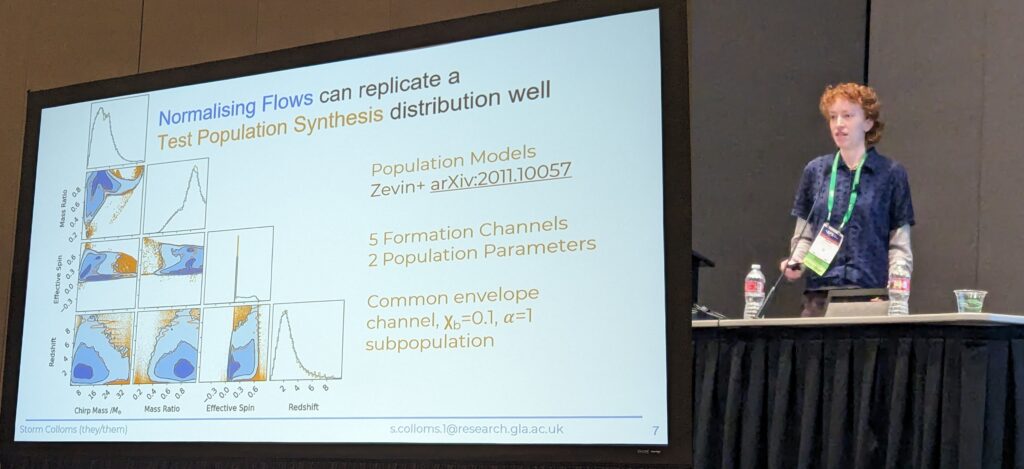
Featured Image Credit: NASA, ESA, CSA/Joseph DePasquale (STScI), Anton M. Koekemoer (STScI)
Edited by: Storm Colloms, Huei Sears, Jessie Thwaites



